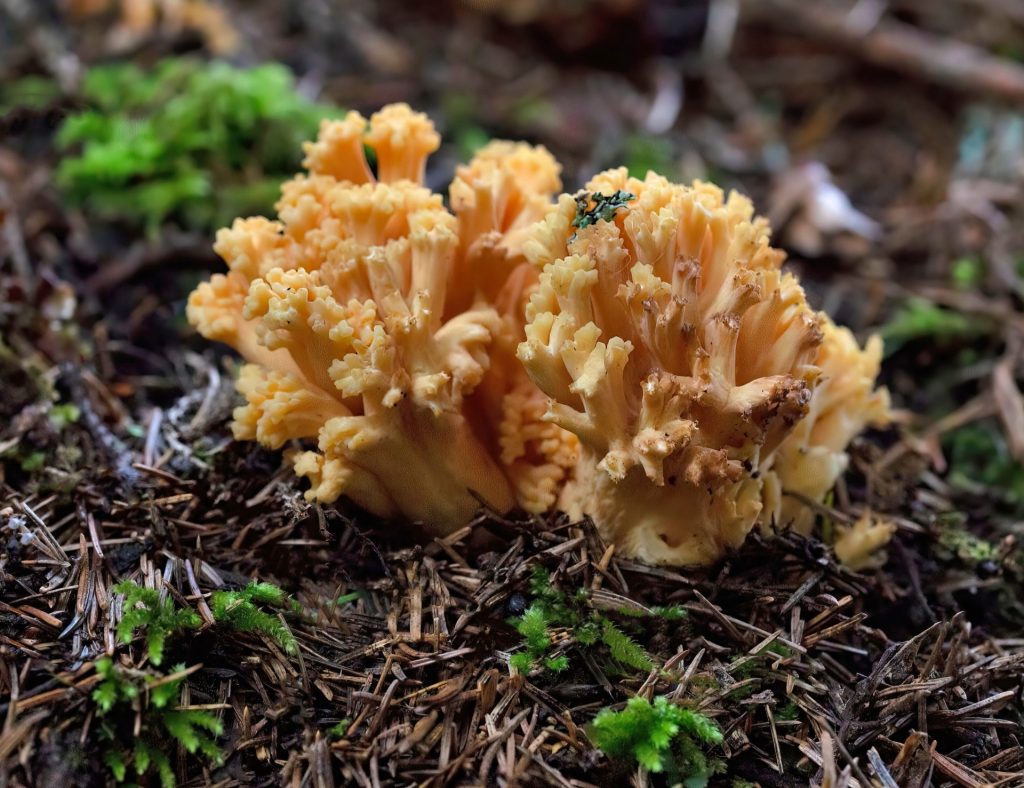Embarking on a culinary journey through North America unveils a rich and diverse mycological tapestry, where mushrooms play a starring role in the continent’s culinary landscape. While the foraging culture is still burgeoning in comparison to global counterparts, North America’s ecosystems offer a plethora of edible mushrooms, each contributing its unique essence to the tables of enthusiasts and chefs alike.
Edible Delights: From Forest to Fork
The verdant woodlands and meadows of North America host a treasure trove of edible mushrooms awaiting discovery. Among these, the revered Morel stands out with its distinctive honeycomb texture, coveted for its seasonal appearance and earthy flavor. Chanterelles, adorned with vibrant colors and a fruity aroma, add an elegant touch to culinary creations. The common Agaricus bisporus family, including white button, cremini, and portobello mushrooms, graces grocery store shelves and kitchens, providing versatile options for various culinary endeavors. The Lobster mushroom, a result of parasitic transformation, introduces whimsical textures and flavors to dishes. As foraging gains popularity, so too does the appreciation for the diverse edible mushrooms flourishing across North America’s landscapes.
Most Commonly Used Edible Mushrooms in North America
Among the most commonly used edible mushrooms in North America, the Morel takes a place of honor for its distinctive appearance and earthy, nutty flavor. Chanterelles, known for their apricot-like scent and delicate taste, are staples in both home kitchens and restaurants. The versatile Agaricus bisporus family, featuring white button, cremini, and portobello mushrooms, finds its way into a myriad of culinary creations, from salads to stir-fries.
Culinary Applications: Beyond the Plate
North American mushrooms are not mere ingredients; they are culinary alchemists, enhancing a plethora of dishes with their earthy umami. From classic soups and stews to rich and flavorful sauces, mushrooms contribute depth and complexity to the culinary repertoire. The creative use of mushroom powders, extracts, and oils has become a culinary trend, offering concentrated mushroom essence for innovative recipes. Furthermore, mushrooms are increasingly taking center stage in the plant-based movement, with hearty Portobello mushrooms serving as delectable meat alternatives in burgers and sandwiches. As chefs and home cooks experiment with these versatile fungi, North America’s culinary landscape evolves, incorporating mushrooms in ways that transcend traditional boundaries.
Wild Varieties and Responsible Foraging
North America’s wild mushroom varieties beckon to the curious forager, promising a connection with the land and a deeper understanding of the region’s mycological diversity. The elusive Hen of the Woods, with its frilled appearance and robust flavor, presents a rewarding challenge for those venturing into the woods. The vibrant orange Chicken of the Woods, known for its chicken-like taste, has become a prized find, especially in vegetarian dishes. Responsible foraging practices are crucial, as misidentification can lead to toxic encounters. As the foraging culture gains momentum, education becomes paramount, ensuring enthusiasts can safely navigate the world of wild mushrooms while maintaining a harmonious relationship with the environment.
Future Outlook: Mushroom Consumption in North America
Looking ahead, the future outlook for mushroom consumption in North America appears promising, driven by a growing awareness of their culinary versatility and nutritional benefits. As the plant-based and sustainable food movements gain traction, mushrooms, with their rich umami flavor and meaty textures, are expected to play a pivotal role in shaping the evolving preferences of consumers. Innovations in mushroom cultivation, processing, and product development are likely to contribute to an increased presence of mushrooms in mainstream American, Canadian, and Mexican diets.
In the USA, where culinary trends often influence global markets, the demand for exotic and wild mushrooms may surge, driven by a curious and adventurous food culture. Canada, with its diverse culinary landscape, may witness an uptick in mushroom-infused dishes, catering to the preferences of a health-conscious population. In Mexico, where mushrooms have been a culinary staple for centuries, there’s an opportunity for an even greater integration of regional varieties into both traditional and modern recipes.
As consumers become more conscious of the health benefits associated with mushroom consumption, including their immune-boosting properties and nutritional richness, the demand for both cultivated and wild varieties is likely to rise. Whether incorporated into everyday meals or featured in gourmet dishes, mushrooms are poised to become an increasingly integral and celebrated part of North American cuisine.
Bibliography
Books
- Kuo, M. (2007). “100 Edible Mushrooms.” University of Michigan Press.
- Arora, D. (1986). “Mushrooms Demystified.” Ten Speed Press.
- Lincoff, G. (1981). “The Audubon Society Field Guide to North American Mushrooms.” Knopf.
- Bessette, A. E., Bessette, A. R., & Fischer, D. W. (1997). “Mushrooms of Northeastern North America.” Syracuse University Press.
- Gentl, A. (2022). “Cooking with Mushrooms: A Fungi Lover’s Guide to the World’s Most Versatile, Flavorful, Health-Boosting Ingredients.” Artisan.
- Hyman, F. (2021). “How to Forage for Mushrooms without Dying: An Absolute Beginner’s Guide to Identifying 29 Wild, Edible Mushrooms.”
- Blizzard, K., & Blizzard, T. (2020. “Wild Mushrooms: A Cookbook and Foraging Guide.”
